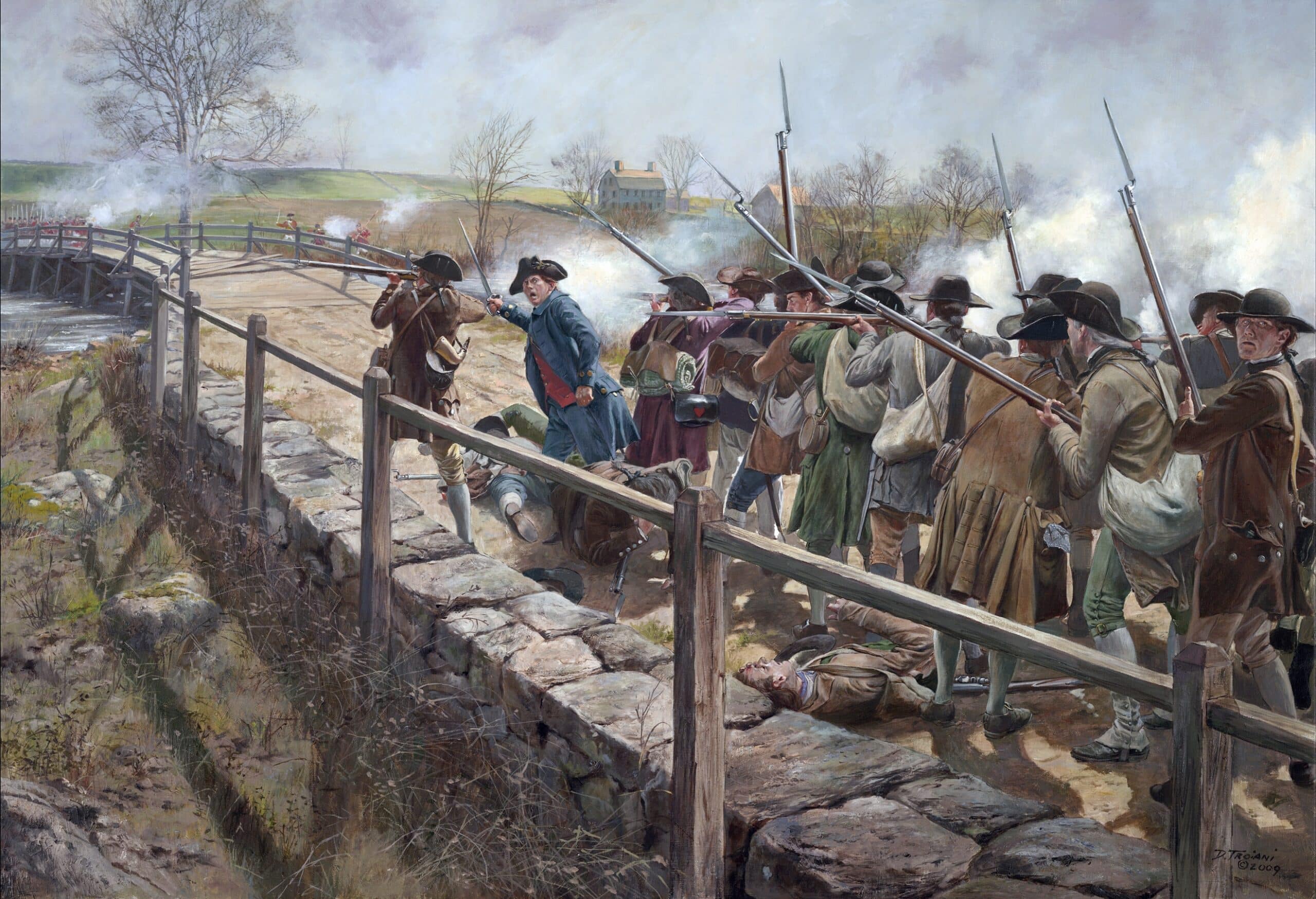The Battle of Concord was the second act of the first skirmish of the American Revolutionary War.

After the British easily marched through the provincials that were standing their ground at the Battle of Lexington, they began their march to Concord.
The men on the Lexington Greene were just a handful of militia that did not have much intention to fight but rather to show the British they were ready to engage. They effectively disrupted the British march despite losing the battle.
During the march to Concord, militia from surrounding Massachusetts Bay cities continued to arrive and boost their numbers. At the time the British arrived, they were outnumbered and at a tactical disadvantage. The provincials fired at them in full force and drove them from the field
The Americans won the Battle of Concord.
Battle of Concord
Read the full article of the Battles of Lexington and Concord
The British column advanced to Concord and, in spreading out, encountered a group of armed militia under the command of Major Buttrick. The British halted their advance, and Colonel Barrett was content to wait for the British to make the first hostile move.
While waiting, reinforcements continued to arrive and raised the provincial manpower to 4:1, favoring the rebels. This included an elite marksman unit commanded by Captain Isaac Davis.
Captain Isaac Davis was a gunsmith by trade and known for his passion for his unit. He made sure that his unit was equipped with the best weaponry and practiced at his shooting range twice a week.
His unit was known for their marksmanship and their charismatic leader. Before leaving that morning, Davis looked at his wife and said: "Take good care of the children."
He volunteered to lead the march and was placed in the front with his marksman and their bayonets.
Meanwhile, the British, under Captain Laurels, were waiting for word on reinforcements. When word came, Laurel organized his men and got them into position to attack the rebels.
He ordered the 4th and 10th units to take up a "street firing" maneuver. This maneuver, if used effectively, would organize the 4th into three ranks while the 10th was behind and loaded.
The 4th would fire a company volley (A company volley is executed by the front rank kneeling, and the rear rank stepped up even with the standing second rank and in the gaps between men; each rank contained 12 men when at full strength) and immediately march in file around the flanks of the 10th.
While the 10th took aim and fired, the 4th would be loading. This would cause the British soldiers to slowly fall back while unleashing company volley after company volley. It was a good plan but hard to execute with men who were inexperienced under fire.
Buttrick and his men began marching towards the British soldiers when three shots rang out. Captain Isaac Davis and one of his men were killed instantly.
Buttrick steadied his men and returned a volley, "Fire!" Buttrick commanded, "For God's sake, fire!" They did, and their volley was effective. Eight officers were wounded. One British soldier lay dead, and another was mortally wounded. The first volley went to the provincials.
The British soldiers fired high and missed their opportunity for a devastating blow. It is the mark of troops that are not experienced under fire. The British fell back to Concord, leaving the provincials in command of the bridge.
